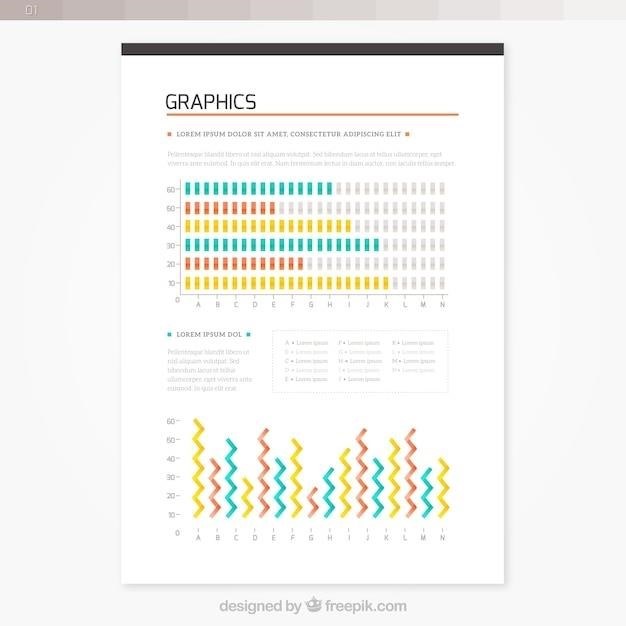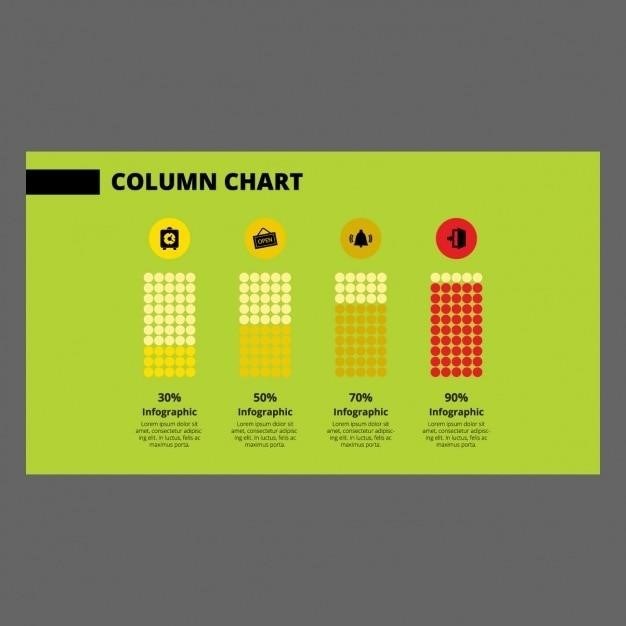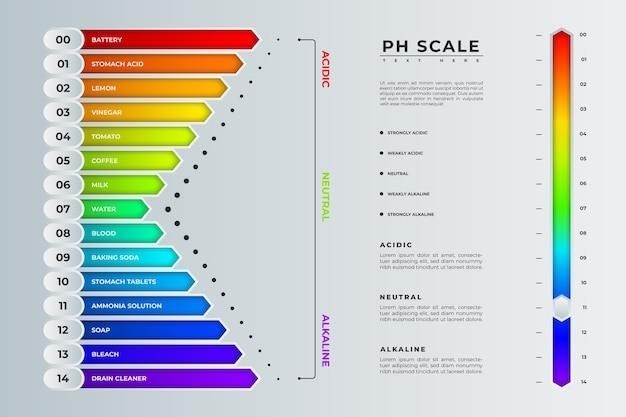Braden Scale PDF⁚ A Comprehensive Guide
This guide explores the Braden Scale PDF, a crucial tool for assessing pressure ulcer risk․ It details the six subscales⁚ sensory perception, moisture, activity, mobility, nutrition, and friction/shear․ Understanding scoring, risk levels, and practical applications is key to preventing pressure injuries․ The guide also examines the scale’s limitations and alternatives, ensuring comprehensive risk assessment․
Understanding the Braden Scale
The Braden Scale, a widely used assessment tool, predicts the risk of pressure ulcer development in patients․ Developed by Barbara Braden and Nancy Bergstrom, it’s a standardized, evidence-based method employed in healthcare settings to identify individuals at risk․ The scale’s significance lies in its ability to proactively identify vulnerabilities before pressure injuries manifest․ Early identification allows for timely intervention and preventative measures․ This proactive approach is crucial because pressure ulcers can lead to significant complications, prolonged healing, and increased healthcare costs․ The Braden Scale is a valuable resource for healthcare professionals in improving patient care and outcomes, contributing to enhanced patient safety and reducing the burden of pressure injuries․ Its simplicity and clinical utility make it a cornerstone of preventative care strategies․ Understanding and correctly utilizing the Braden Scale are essential skills for nurses, physicians, and other healthcare providers․
The Six Subscales of the Braden Scale
The Braden Scale’s predictive power stems from its assessment across six key subscales, each contributing to the overall risk score․ These subscales are⁚ Sensory Perception, evaluating the patient’s ability to respond to discomfort; Moisture, assessing the degree of skin exposure to moisture; Activity, measuring the patient’s physical activity level; Mobility, evaluating the patient’s ability to change and control body position; Nutrition, assessing the patient’s dietary intake and nutritional status; and finally, Friction and Shear, evaluating the potential for skin damage from these forces․ Each subscale is scored individually, and these scores are summed to generate a total score that determines the patient’s overall risk of developing a pressure ulcer; The detailed assessment of these factors provides a comprehensive picture of the patient’s vulnerability, enabling targeted interventions․
Scoring the Braden Scale⁚ Risk Levels
The Braden Scale uses a numerical scoring system for each of its six subscales, with each subscale having a range of scores that reflect varying levels of risk․ Lower scores indicate a higher risk of pressure ulcer development․ The total score, derived by summing the scores from each subscale, is then used to categorize the patient’s risk level․ A total score of 19-23 typically indicates a “No Risk” category, signifying a low probability of pressure ulcer development․ Scores ranging from 15-18 usually fall under “Mild Risk,” suggesting a need for preventative measures․ Patients scoring 13-14 are classified as “Moderate Risk,” necessitating close monitoring and proactive interventions․ Scores of 10-12 represent “High Risk,” requiring frequent assessment and intensive preventative care․ Finally, a score of 9 or below indicates “Severe Risk,” demanding immediate and comprehensive intervention to prevent pressure ulcer formation․ This tiered system allows healthcare providers to tailor their approach based on the individual patient’s assessed risk․
Interpreting Braden Scale Scores⁚ Risk Categories
Interpreting Braden Scale scores involves understanding the risk categories associated with different score ranges․ A score of 19-23 signifies no risk of pressure ulcer development, indicating the patient is unlikely to develop a pressure injury․ Scores between 15 and 18 fall into the mild-risk category, suggesting the patient possesses some risk factors but is not considered high-risk․ Preventative measures should be implemented․ A moderate risk is indicated by scores of 13-14․ These individuals require closer monitoring and increased preventative interventions․ High-risk patients score between 10 and 12, necessitating frequent assessments and intensive preventative care strategies․ Finally, scores of 9 or less categorize the patient as severely at risk, demanding immediate and comprehensive interventions to mitigate the high likelihood of pressure ulcer development․ This risk categorization guides the intensity of preventative care and the frequency of monitoring․
Using the Braden Scale in Clinical Practice
In clinical settings, the Braden Scale’s application is multifaceted․ Nurses and other healthcare professionals use it as a standardized assessment tool to identify patients at risk for pressure ulcers upon admission and regularly thereafter․ The scale’s six subscales provide a comprehensive evaluation of factors influencing pressure ulcer development․ The results directly inform the development of individualized care plans․ For example, a patient with a low Braden score might necessitate a pressure-relieving mattress, frequent repositioning, and meticulous skin care․ The scale’s objective scoring system facilitates consistent assessment across healthcare providers, minimizing subjective interpretation and ensuring standardized care․ Regular reassessments using the Braden Scale allow for adjustments to care plans as a patient’s condition changes, enhancing the effectiveness of preventative measures․ Furthermore, the Braden Scale’s integration into electronic health records (EHRs) streamlines documentation and promotes efficient data analysis for quality improvement initiatives․
Preventing Pressure Ulcers with the Braden Scale
The Braden Scale plays a pivotal role in proactive pressure ulcer prevention․ By identifying individuals at high risk, healthcare providers can implement targeted interventions before ulcers develop․ A low Braden score signals the need for immediate action, such as specialized mattresses, repositioning schedules, and optimized nutrition plans․ The scale’s focus on sensory perception, moisture, activity, mobility, nutrition, and friction/shear allows for a holistic approach to prevention․ Addressing each of these factors reduces the likelihood of pressure ulcer formation․ For instance, a patient with impaired mobility might benefit from regular passive range-of-motion exercises and assistive devices․ Those with compromised nutritional status may require dietary supplements or consultations with a registered dietitian․ The Braden Scale’s predictive capabilities empower healthcare teams to personalize preventative care, minimizing risk and improving patient outcomes․ Regular monitoring and reassessment using the Braden Scale ensure ongoing effectiveness of preventative strategies․
Braden Scale and Pressure Ulcer Prevention Strategies
Utilizing the Braden Scale facilitates the development and implementation of effective pressure ulcer prevention strategies․ A low score indicates a high risk, prompting the adoption of several evidence-based interventions․ These include, but are not limited to, frequent repositioning of the patient to alleviate pressure points, the use of specialized pressure-relieving surfaces such as air mattresses or foam overlays, meticulous skin care to maintain hygiene and hydration, and the optimization of nutritional intake to promote tissue healing and overall health․ Furthermore, the Braden Scale can help in selecting appropriate support surfaces and wound dressings․ For patients with impaired mobility, physical therapy interventions may be recommended to improve their range of motion and reduce their risk of developing pressure injuries․ The scale’s detailed assessment of sensory perception, moisture, activity, mobility, nutrition, and friction and shear allows healthcare providers to tailor their preventative care to the specific needs of each patient, significantly enhancing the effectiveness of pressure ulcer prevention initiatives․ Regular reassessment with the Braden Scale ensures the ongoing appropriateness of these strategies․
The Braden Scale⁚ A Tool for Risk Assessment

The Braden Scale stands as a cornerstone in pressure ulcer risk assessment, providing a standardized method for evaluating an individual’s vulnerability to developing these debilitating wounds․ Its six subscales—sensory perception, moisture, activity, mobility, nutrition, and friction/shear—offer a holistic view of a patient’s risk profile․ Unlike other assessment tools, the Braden Scale goes beyond simple observation; it delves into specific aspects of patient function and well-being that contribute to pressure ulcer development․ This comprehensive approach allows healthcare professionals to identify individuals at risk even before the onset of visible skin damage․ The numerical scoring system allows for objective comparison across patients and facilitates communication among healthcare team members․ By quantifying risk, the Braden Scale enables proactive interventions, reducing the incidence and severity of pressure ulcers and ultimately improving patient outcomes․ Its simplicity of use makes it adaptable across various healthcare settings, further enhancing its value as a reliable risk assessment instrument․
Documentation and Reporting Using the Braden Scale
Accurate documentation and reporting are paramount when utilizing the Braden Scale․ The assessment should be meticulously recorded in the patient’s chart, including the date, time, and individual completing the assessment․ Each of the six subscales should be documented with its corresponding score, along with any relevant observations that informed the scoring․ For instance, specific details about a patient’s mobility limitations or nutritional status should be included․ The total Braden Scale score, indicating the overall risk level, must be clearly stated․ This detailed documentation allows for consistent monitoring of the patient’s risk over time, facilitates effective communication among healthcare professionals, and provides a verifiable record for tracking interventions and outcomes․ Furthermore, proper documentation is crucial for legal and regulatory compliance, ensuring accountability and adherence to best practices in pressure ulcer prevention․ Clear reporting mechanisms must be established to effectively communicate the assessment results to the appropriate healthcare team members, fostering collaborative care and timely interventions․
Benefits of Using the Braden Scale
Employing the Braden Scale offers numerous advantages in pressure ulcer prevention and management․ Its standardized format ensures consistency in risk assessment across various healthcare settings and among different clinicians․ This leads to more reliable identification of patients at high risk, allowing for the timely implementation of preventative measures․ The scale’s simplicity and ease of use make it readily accessible to a wide range of healthcare professionals, requiring minimal training and time investment for proficient application․ Early identification of at-risk individuals allows for proactive interventions, reducing the incidence of pressure ulcers and associated complications․ The objective scoring system minimizes subjective bias, promoting more accurate and consistent risk stratification․ Furthermore, the Braden Scale’s use facilitates effective communication among healthcare team members, enabling collaborative care planning and improved patient outcomes․ The availability of the Braden Scale in PDF format enhances accessibility and ease of integration into electronic health records, streamlining workflow and improving data management․ Ultimately, utilization of the Braden Scale contributes to improved patient safety, reduced healthcare costs associated with pressure ulcer treatment, and enhanced quality of care․
Limitations of the Braden Scale

While the Braden Scale is a widely used and valuable tool, it does possess certain limitations․ Its reliance on subjective assessment of certain subscales, such as sensory perception, can introduce variability depending on the assessor’s interpretation and the patient’s individual responses․ The scale may not accurately reflect the risk in all patient populations, particularly those with specific conditions or comorbidities not explicitly addressed within the scoring system․ For instance, patients with cognitive impairments may present challenges in accurate assessment․ The Braden Scale primarily focuses on predicting the risk of pressure ulcers but does not provide specific guidance on individualized prevention strategies․ It’s crucial to remember that the score is only one factor in a comprehensive risk assessment; other clinical factors must be considered․ Furthermore, the scale’s effectiveness can be reduced if used without proper training and understanding of its application and interpretation․ Finally, the Braden Scale does not account for all potential risk factors; external factors like environmental influences on skin integrity are not explicitly incorporated․ Consequently, healthcare professionals must use the scale judiciously, appreciating its strengths and limitations within a broader clinical context․
Alternative Pressure Ulcer Risk Assessment Tools
While the Braden Scale is a prevalent tool, several alternative methods exist for evaluating pressure ulcer risk․ The Norton Scale, for example, assesses risk based on physical condition, mental state, activity, mobility, and incontinence․ This scale, developed earlier than the Braden Scale, offers a different perspective on risk factors․ Other scales, such as the Waterlow Score, incorporate additional factors like body mass index and nutritional status, providing a more comprehensive assessment․ These tools can be particularly useful for specific patient populations where the Braden Scale might be less effective․ The choice of which scale to use often depends on the specific needs of the patient and the clinical setting․ Some institutions may prefer a particular scale due to established protocols or familiarity․ The availability of electronic versions and integration into electronic health records also influences the selection of a risk assessment tool․ Healthcare providers should be aware of the various options available and choose the tool that best suits their patient population and clinical circumstances․ Regular review and updates of the chosen tool are important to ensure accuracy and efficacy in pressure ulcer prevention․ It’s vital to note that no single scale is universally superior, and a multifactorial approach may provide the most accurate overall risk assessment․
Accessing and Utilizing Braden Scale PDFs
Numerous online resources offer downloadable Braden Scale PDFs, facilitating easy access for healthcare professionals․ However, it’s crucial to verify the source’s legitimacy and ensure the PDF is an accurate and authorized version to maintain the integrity of the assessment․ Many websites dedicated to nursing resources or medical supply companies provide free downloads․ Some publishers may offer the scale as part of larger publications or training materials, potentially requiring purchase or subscription․ Once obtained, the PDF should be printed clearly for easy use at the point of care․ Familiarizing oneself with the scoring system and risk categories is essential before utilizing the scale․ Accurate data input is critical for obtaining a reliable risk assessment․ After scoring, the results should be documented appropriately in the patient’s chart, along with any associated interventions․ Remember that the Braden Scale is a valuable tool for risk assessment, but it shouldn’t be the sole determinant of pressure ulcer prevention strategies․ A comprehensive approach involving regular skin checks and proactive care is vital․ Always refer to your institution’s protocols and guidelines for correct usage and documentation․
